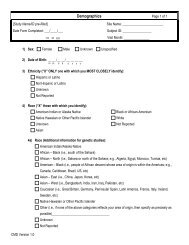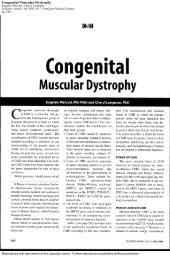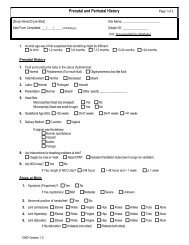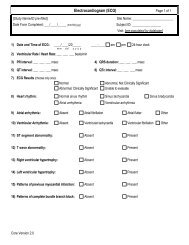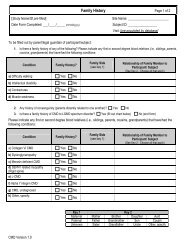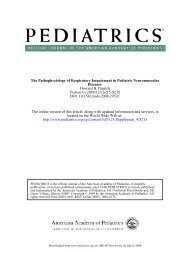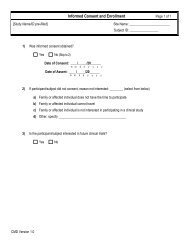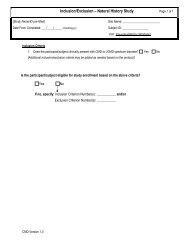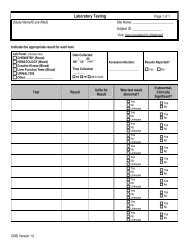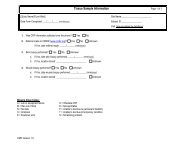The Management of Congenital Muscular Dystrophy ... - Cure CMD
The Management of Congenital Muscular Dystrophy ... - Cure CMD
The Management of Congenital Muscular Dystrophy ... - Cure CMD
Create successful ePaper yourself
Turn your PDF publications into a flip-book with our unique Google optimized e-Paper software.
4 Gastrointestinal <strong>Management</strong>Nutrition, Feeding, and Oral CareFeeding and nutrition problems are frequentlyencountered with children who have <strong>CMD</strong>.Other frequently encountered problems mayinclude gastroesophageal reflux (GER),aspiration, constipation, speech difficulties, poorbone health, and difficulties with oral and dentalhygiene. <strong>Management</strong> <strong>of</strong> these issues is asignificant priority for optimizing your child’scare and is best addressed by a multidisciplinaryteam, including specialists experienced infeeding and swallowing evaluation, a dietitianor nutritionist, and a gastroenterologist.Feeding andNutritional SymptomsA common problem in people with <strong>CMD</strong> isdifficulty with gaining weight, or failure tothrive. For other people with <strong>CMD</strong>, weight gain,<strong>of</strong>ten related to the loss <strong>of</strong> walking, may becomean issue.Other symptoms <strong>of</strong> feeding concerns with yourchild may include:• frequent pulmonary infections• chest/upper abdominal pain, vomiting• difficulties with chewing, choking, orcoughing• poor oral coordination and excessivedrooling• constipation or diarrhea• difficulties with eating independently pastan appropriate age• length <strong>of</strong> mealtimes; meals lasting longerthan 30 minutes are considered to be prolonged; this may be a sign <strong>of</strong> feedingdifficulty• increased family stress or decreasedenjoyment <strong>of</strong> mealtimes for the childand caregivers.AssessmentGrowth assessments for your child need to occurat every regular visit by measuring weight andheight. Ulnar length may be used for heightmeasurement if your child is older than age 5years and is unable to stand.Children with <strong>CMD</strong> <strong>of</strong>ten have a growthcurve below what is expected for age. This isacceptable if your child is in good health,without signs <strong>of</strong> fatigue, recurrent infections,or cardiac and respiratory problems. It isimportant to get an accurate weight when yourchild is evaluated and to keep frequent track <strong>of</strong>your child’s weight curve to ensure continuedweight gain along his or her own course.If your child’s growth or health is not adequate,a feeding assessment may be recommended.This should include an oral-facial examination,observation and evaluation <strong>of</strong> his or her feedingand swallowing skills, and assessment <strong>of</strong> his orher seating and positioning.Vide<strong>of</strong>luoroscopy or fiber-endoscopic evaluationcan be helpful in diagnosing difficulties yourchild may be having with swallowing that canincrease the risk <strong>of</strong> aspiration.Other associatedfactors that needto be consideredin the feedingand swallowingassessmentinclude neckweakness,jaw and neckcontractures, weak or high arched palate, poortongue lateralization, dental crowding, scoliosis,weak or ineffective cough, respiratory fatigue,insufficient night-time breathing function, poorappetite, gastroesophageal reflux (GER), anddysmotility.15



